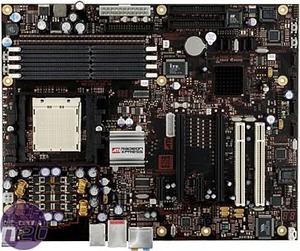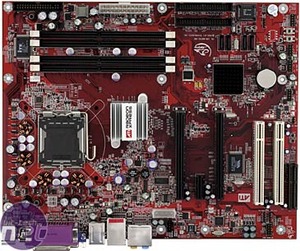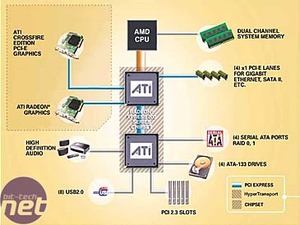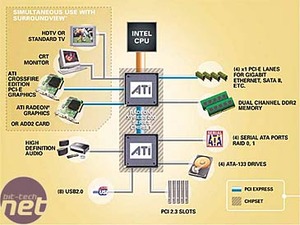Motherboards
There are chipsets available for both AMD and Intel processors, and there is a wide range of partners who are supporting ATI with the launch of its CrossFire technology. ATI have revamped the southbridge and removed some of the problems with the last iteration of the southbridge that was coupled with the RS400/RS480 based motherboards that were aimed at the more mainstream user.The CrossFire platform is different, however: ATI have some of the biggest enthusiast motherboard manufacturers on board at launch, including ECS Elitegroup, DFI and the usual suspects from Tier 1; namely ASUS, Gigabyte and MSI. The interesting additions to the line up are Tul, who are the company behind the PowerColor brand name, and also Sapphire. Both have dipped their toes in the water with motherboards, and it will be interesting to see how well they fare against the big names on an enthusiast-orientated platform.


Both boards have ample room around the socket, catering for the enthusiast who is likely to want to add their own aftermarket cooling solution to enable them to get the best out of their system. We were speaking to one of the chipset engineers earlier today, and he made reference to the level of compatibility of the chipset with the leading memory modules. They’ve spent a good amount of time with all of the major memory manufacturers, and the DRAM makers to ensure that both generic and branded memory modules work without issue.
We hope that this will be passed down to the motherboard partners, who will be manufacturing the boards that you, the consumer, purchase. He also made reference to the passive cooling solutions that had been implemented across the range of partners, with only DFI appearing to be the only board partner using a heatsink/fan combination on the northbridge – all other board manufacturers are using passive solutions at present. We will grab some snaps of DFI’s CrossFire motherboard later this week – it is a motherboard that we’re getting very excited about. If it gets close to the LANPARTY nF4 series, it’s going to be a fantastic motherboard.
The Chipsets
As we have mentioned, the chipset is a dual-chip solution and both the RD400/RD480 northbridges and the SB250 southbridge are manufactured on a 0.13-micron FAB process. Both chipsets have 20 PCI-Express lanes, which are split down in to two PCI-Express x8 lanes for the video cards, and a further four lanes that can be used for whatever the board manufacturer pleases.Both the RD400 and RD480 northbridges have support for up to 4GB of memory. The RD400, Intel-based, solution has support for DDR2, while the RD480, AMD-based, northbridge has support for DDR1 memory modules. The Intel solution also has support for ATI’s Integrated Graphics Solution, meaning that it is ultimately possible to drive five displays from the same system. If you are opting for more displays, you will not be able to run CrossFire. CrossFire can only support three displays when enabled, as the dongle that connects the CrossFire Edition card to the slave card, taking up one of the DVI ports on the CrossFire Edition video card. Also, it’s worth noting that both AMD and Intel platforms have support for the recently released dual core processors


In general, the chipset is lacking some of the features that NForce 4 has, such as a hardware firewall, but has many features that other chipsets don’t have, thus making it as solid as anything else that is currently available. We think that it is a case of weighing up the differences, and deciding what features are more important to you when making your purchase. Ideally, we’d like to see a collaboration of the best features from all of the different chipsets that are available but then, we do like to have our cake and eat it.

MSI MPG Velox 100R Chassis Review
October 14 2021 | 15:04







Want to comment? Please log in.